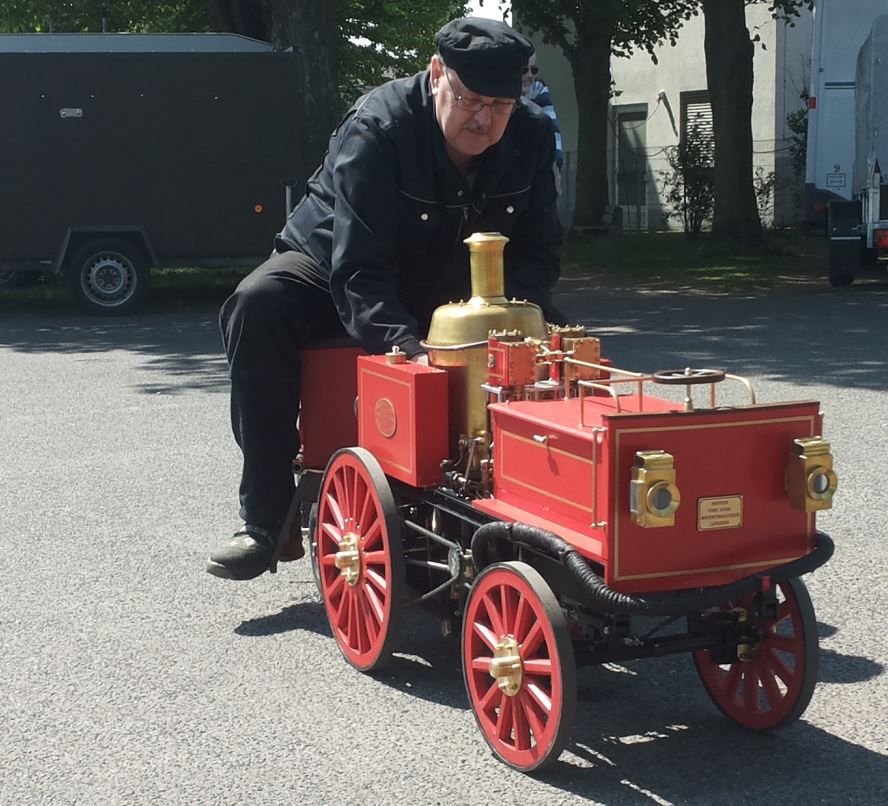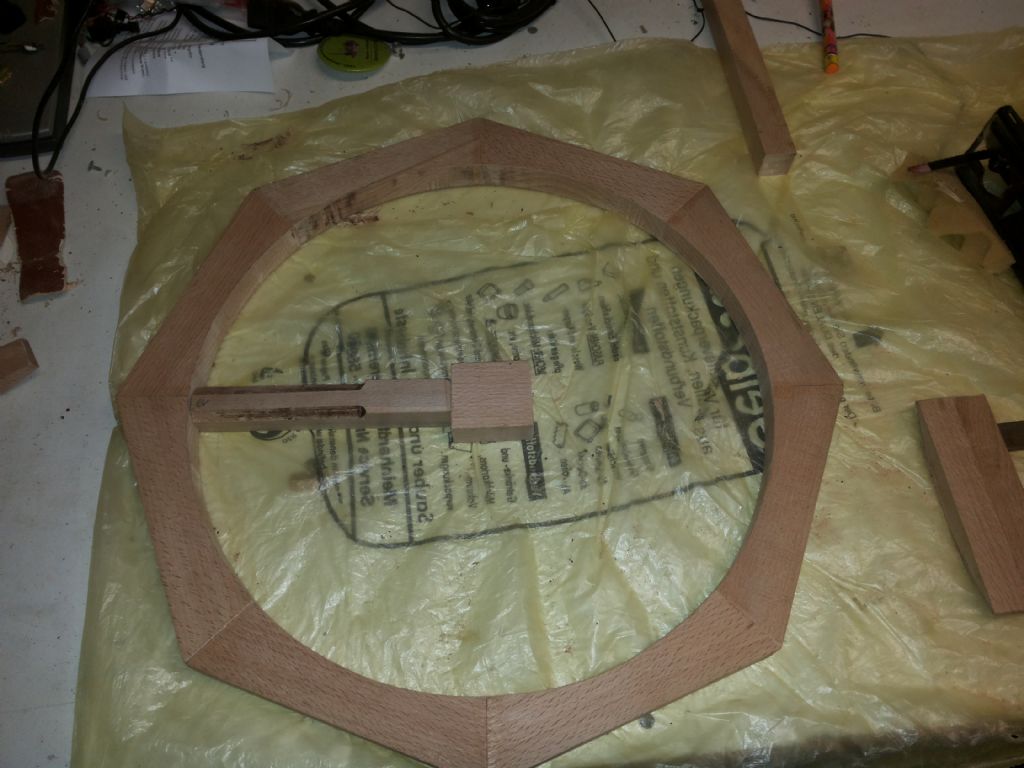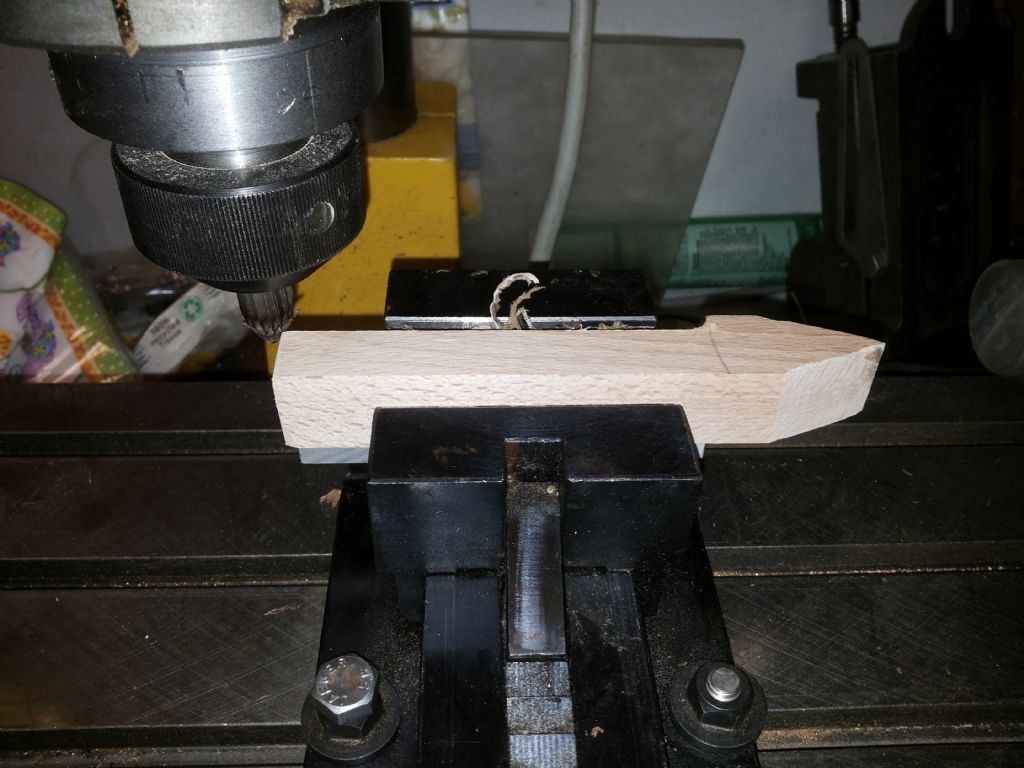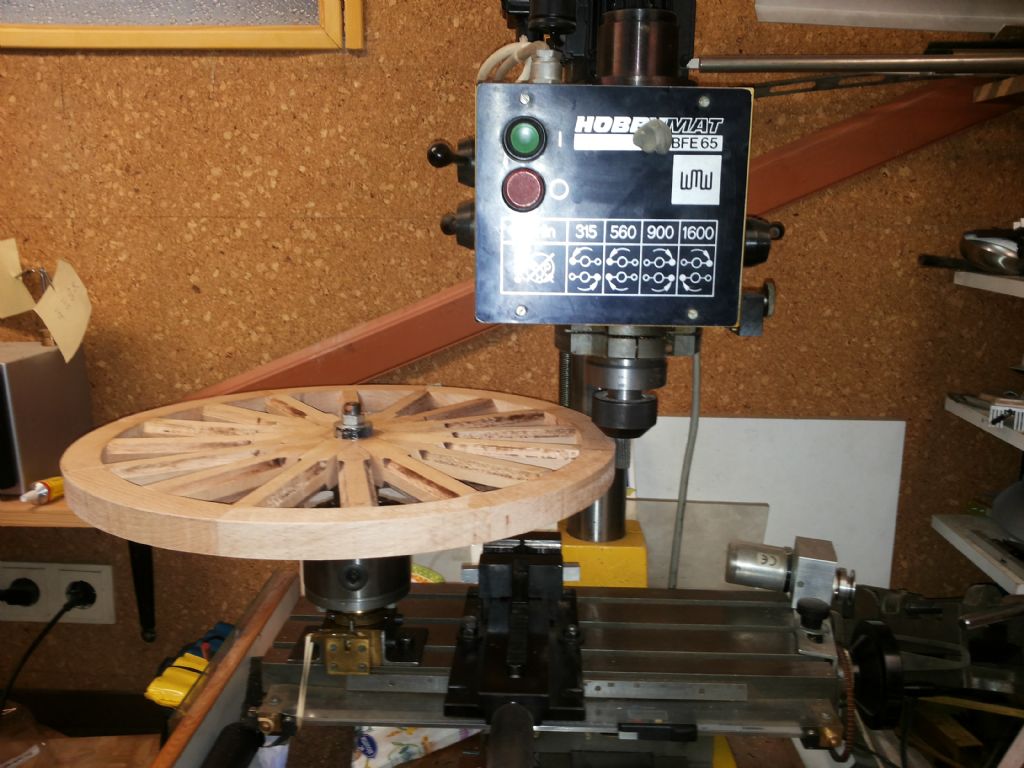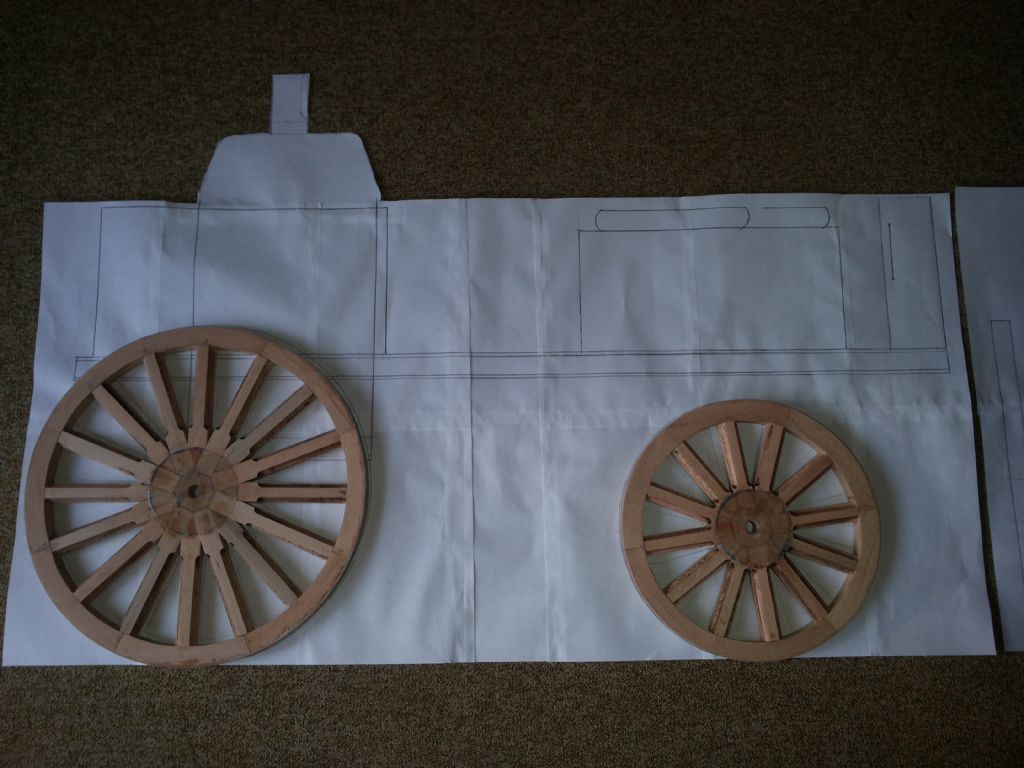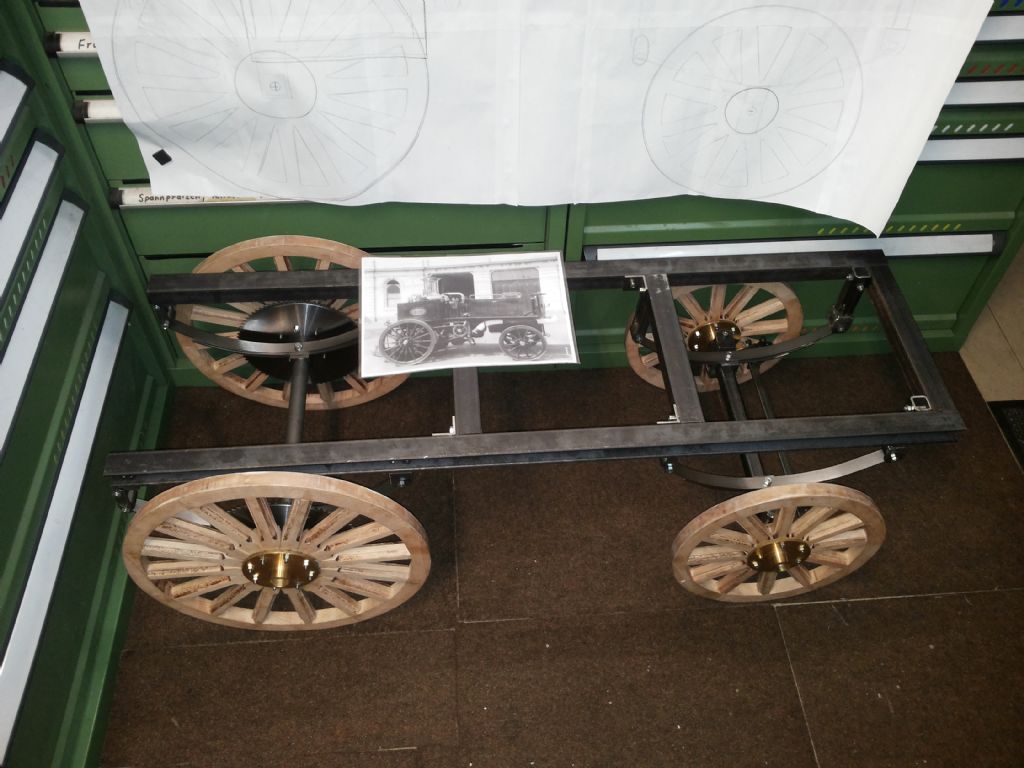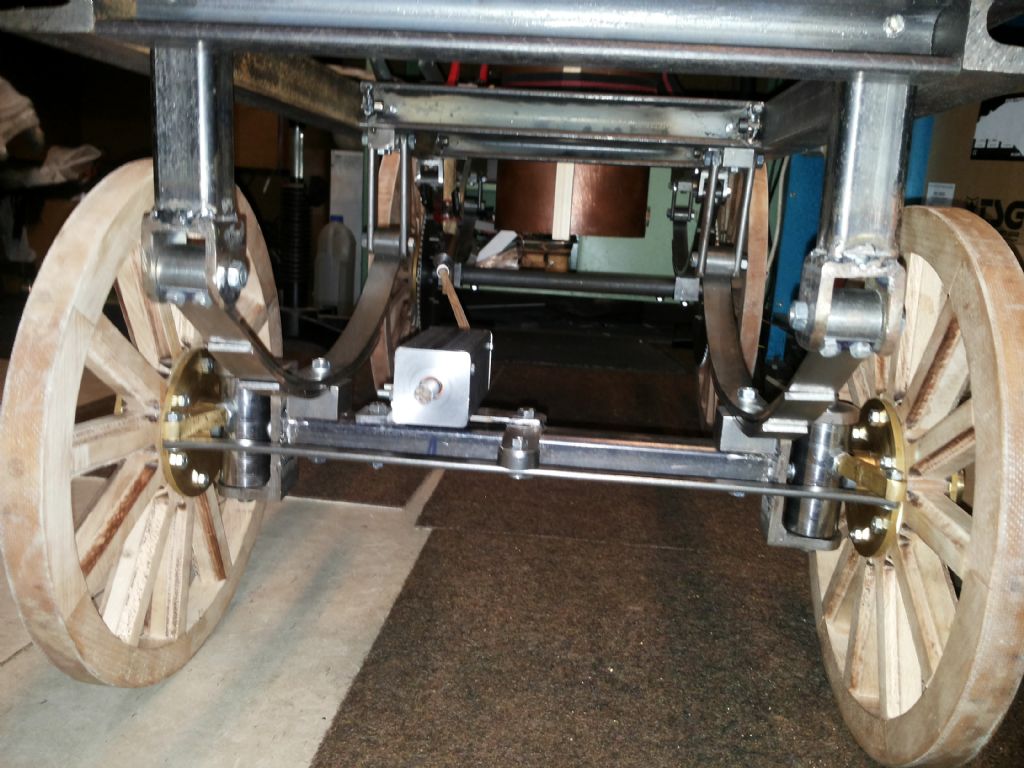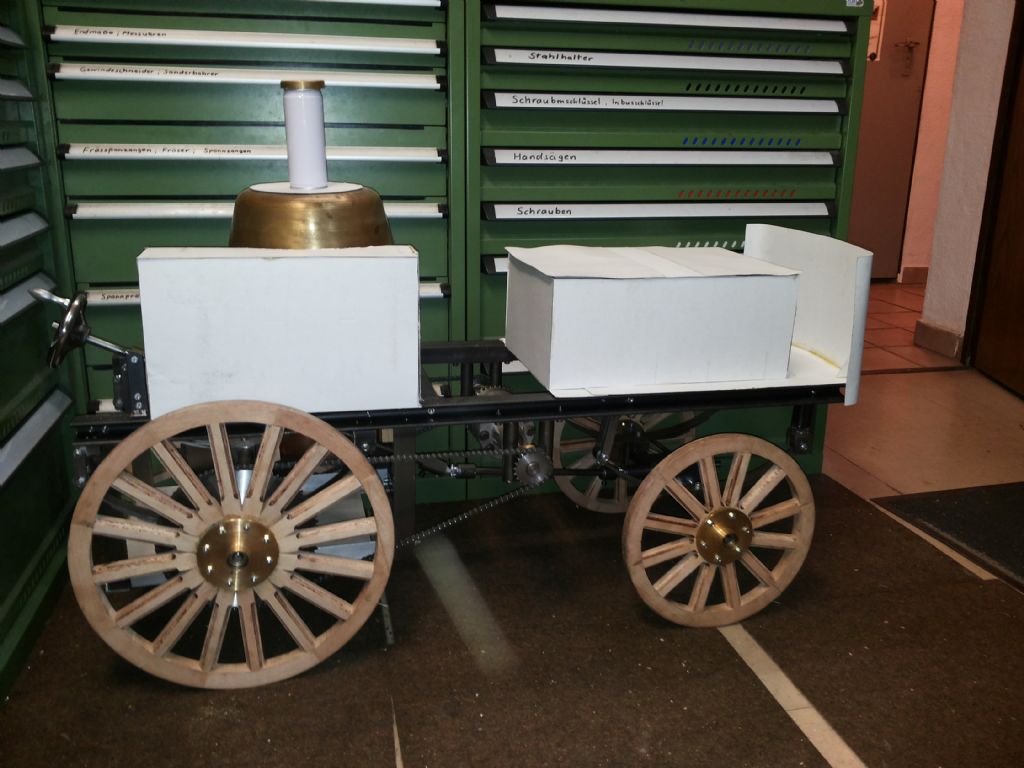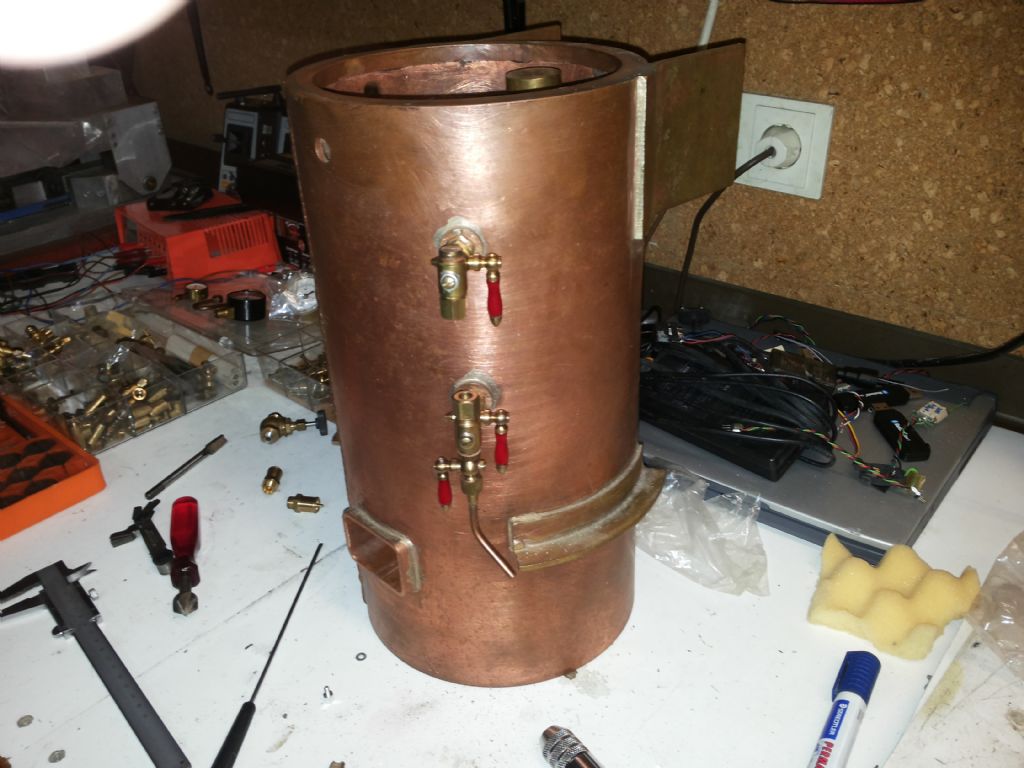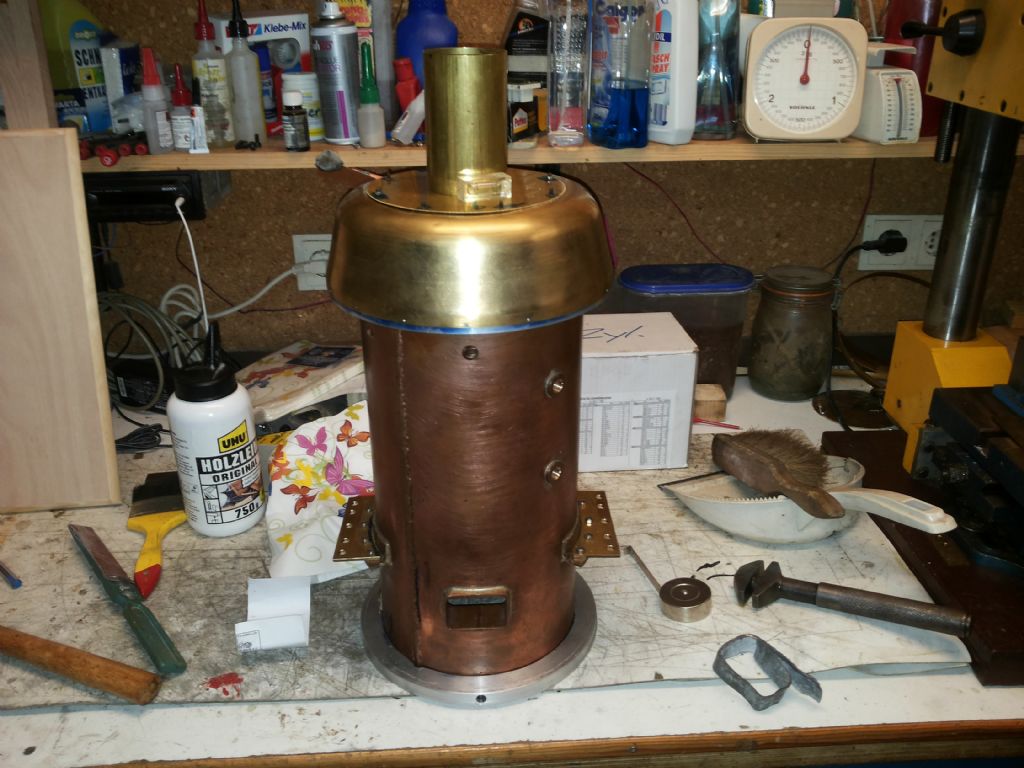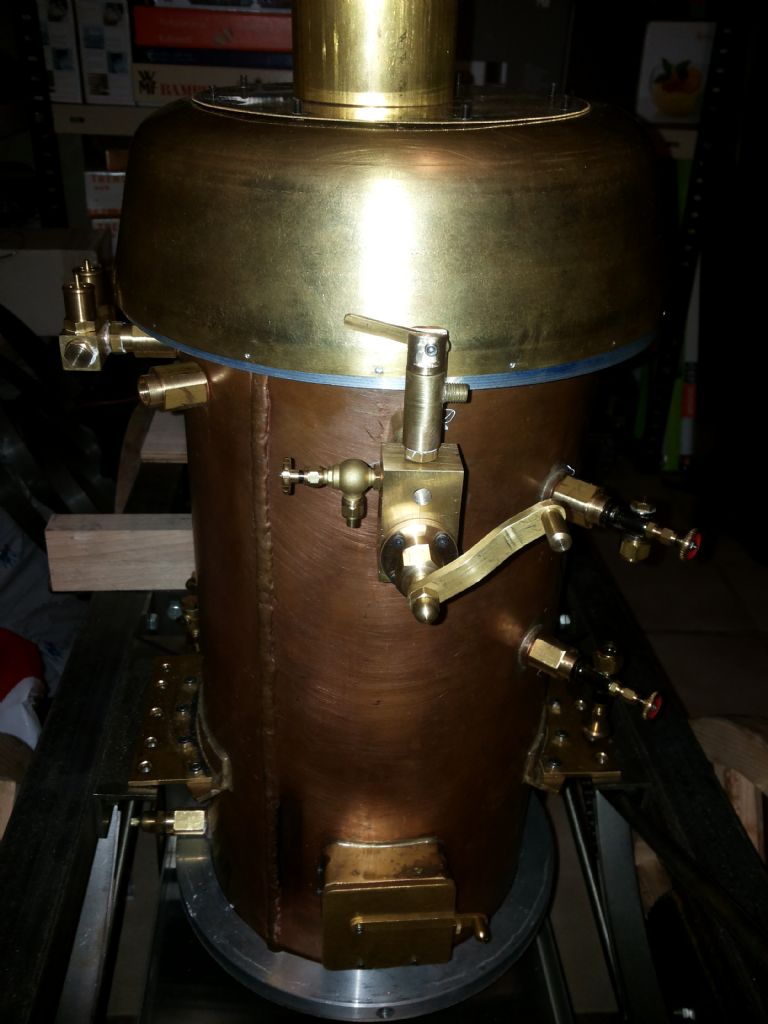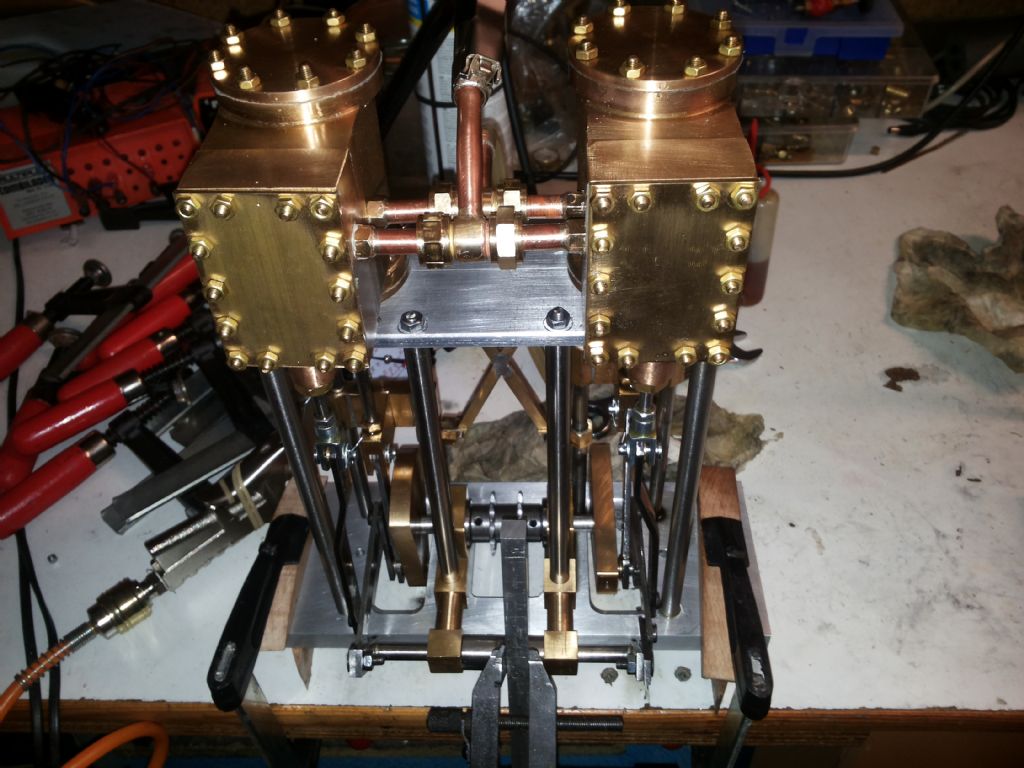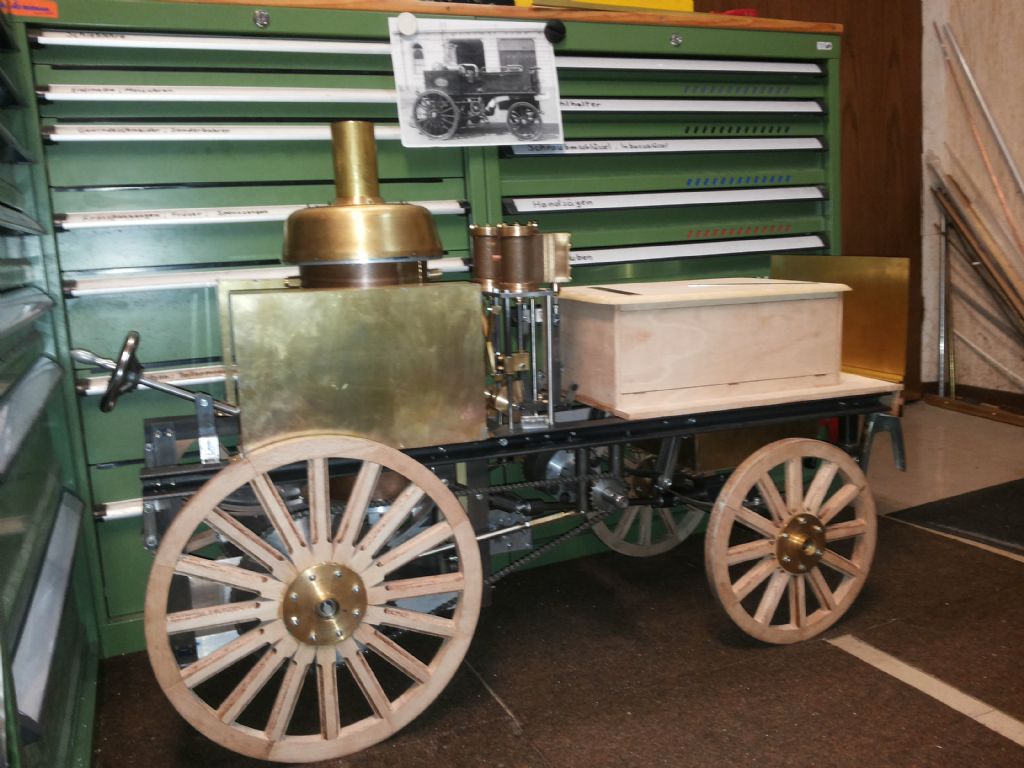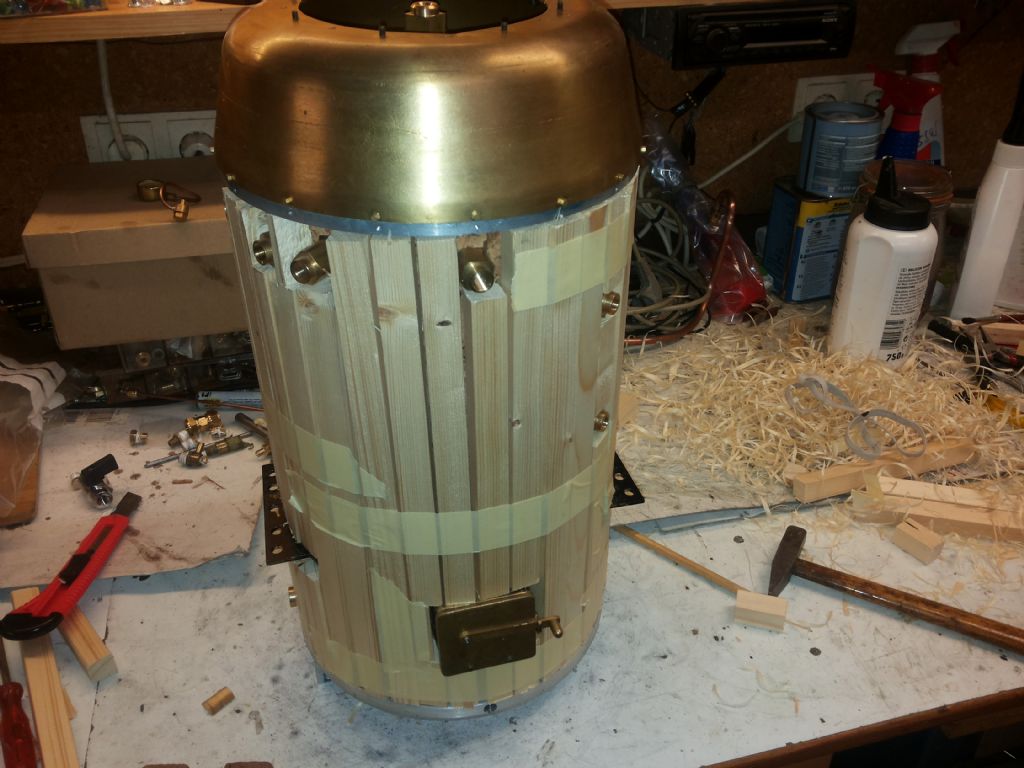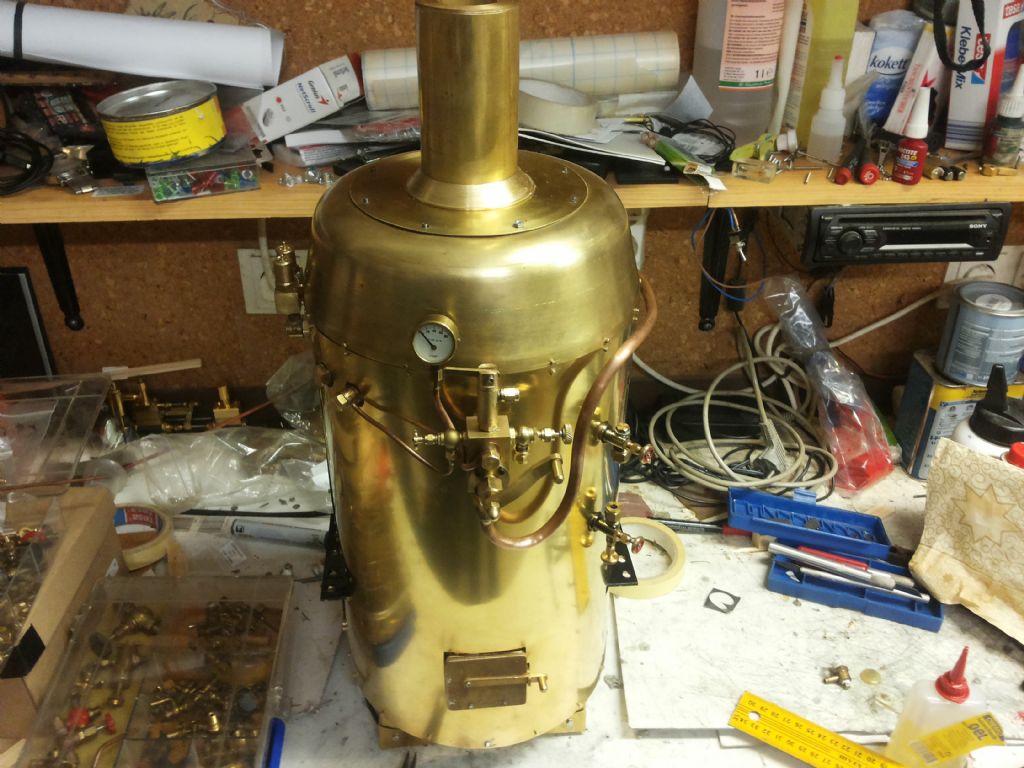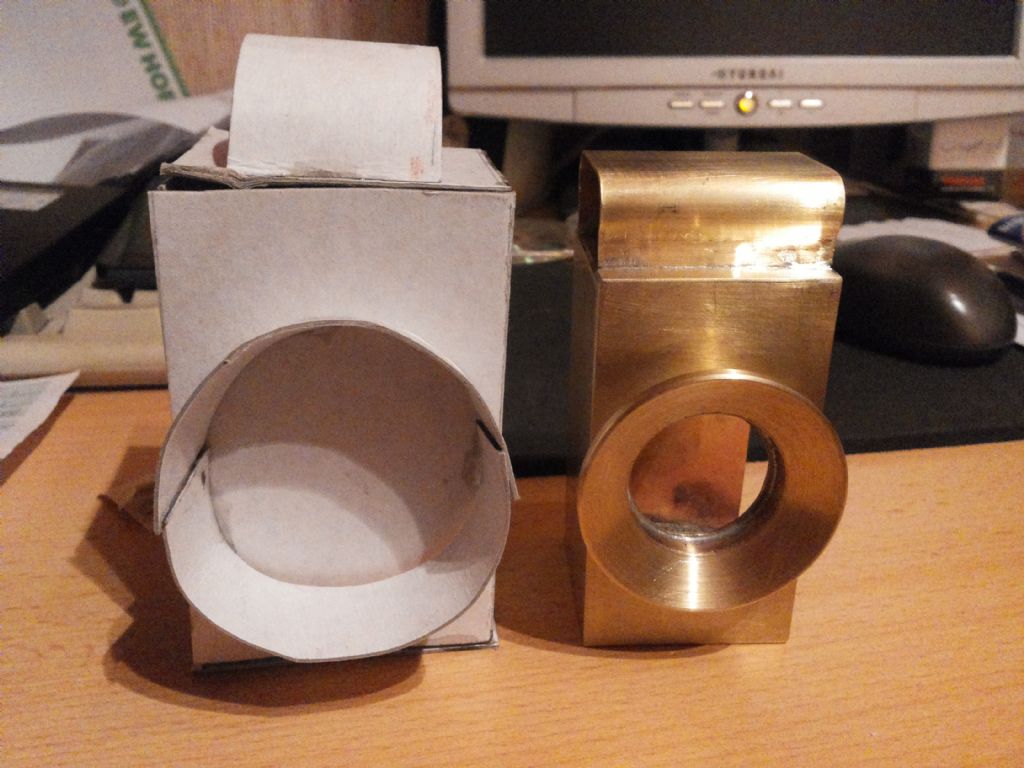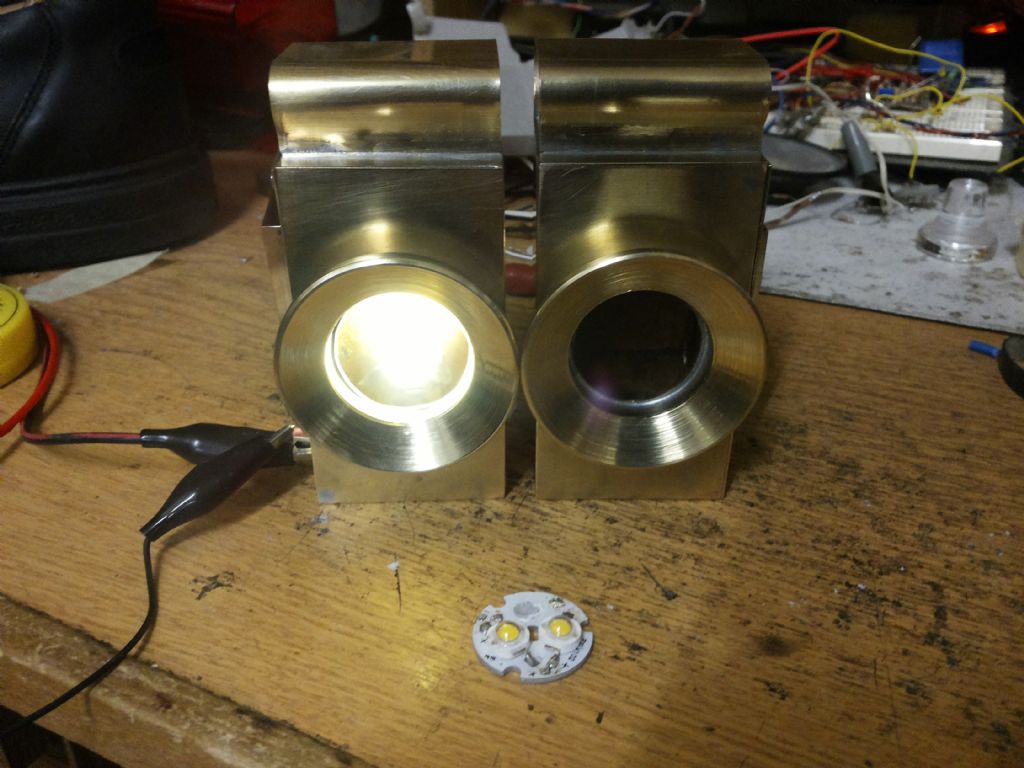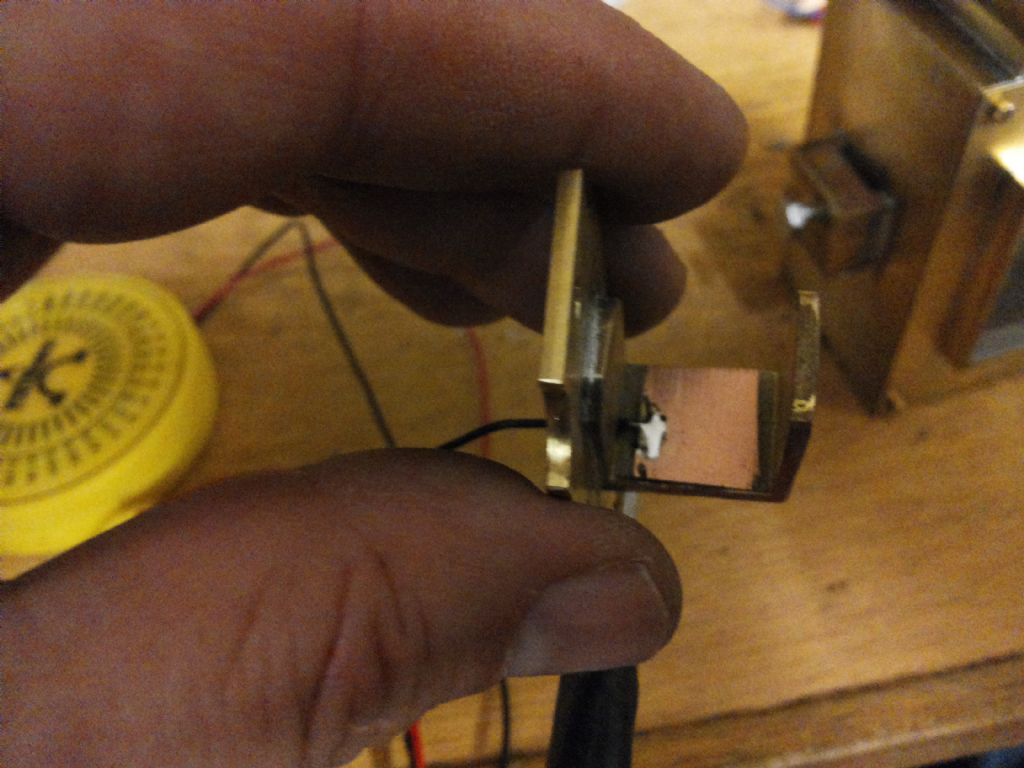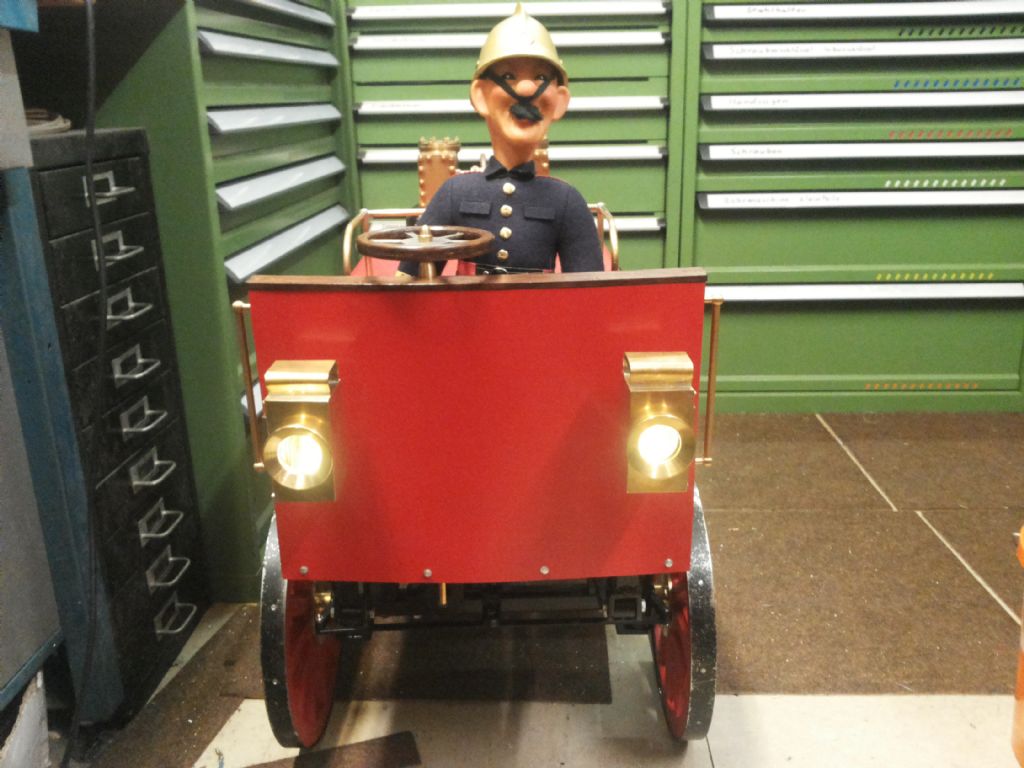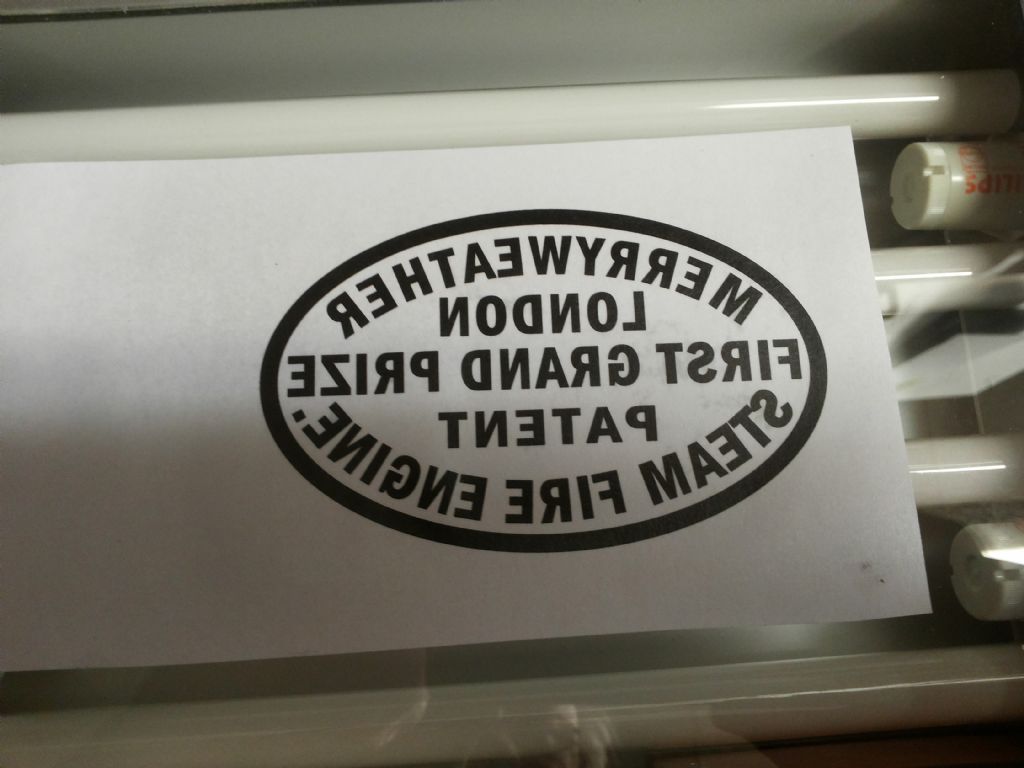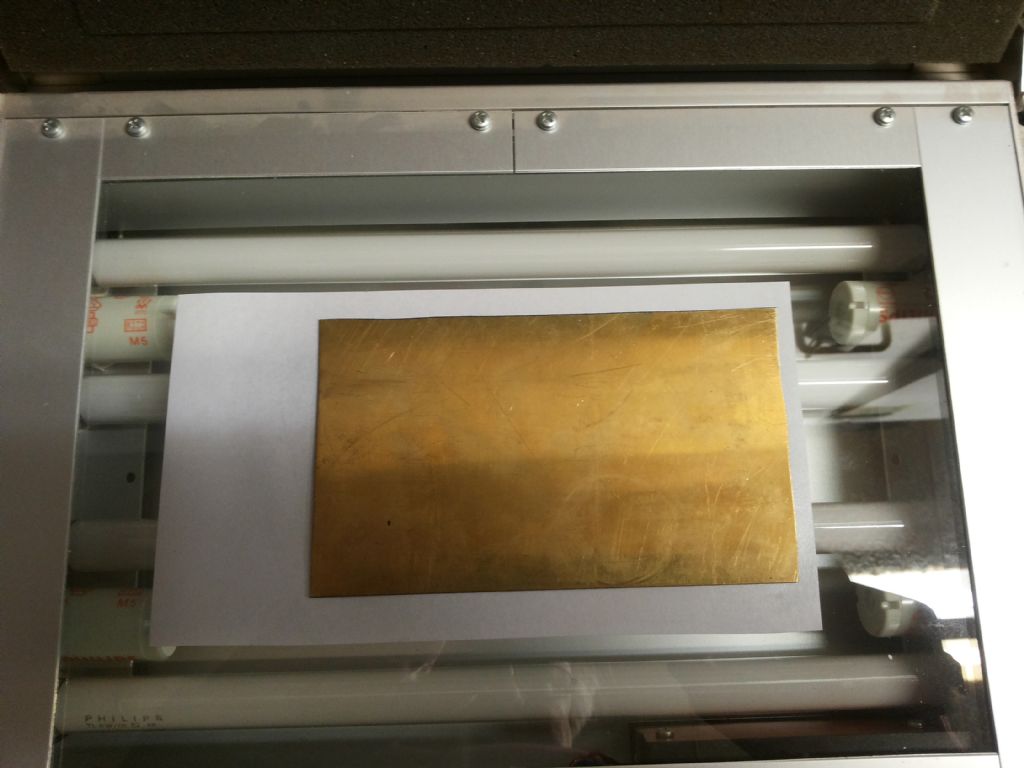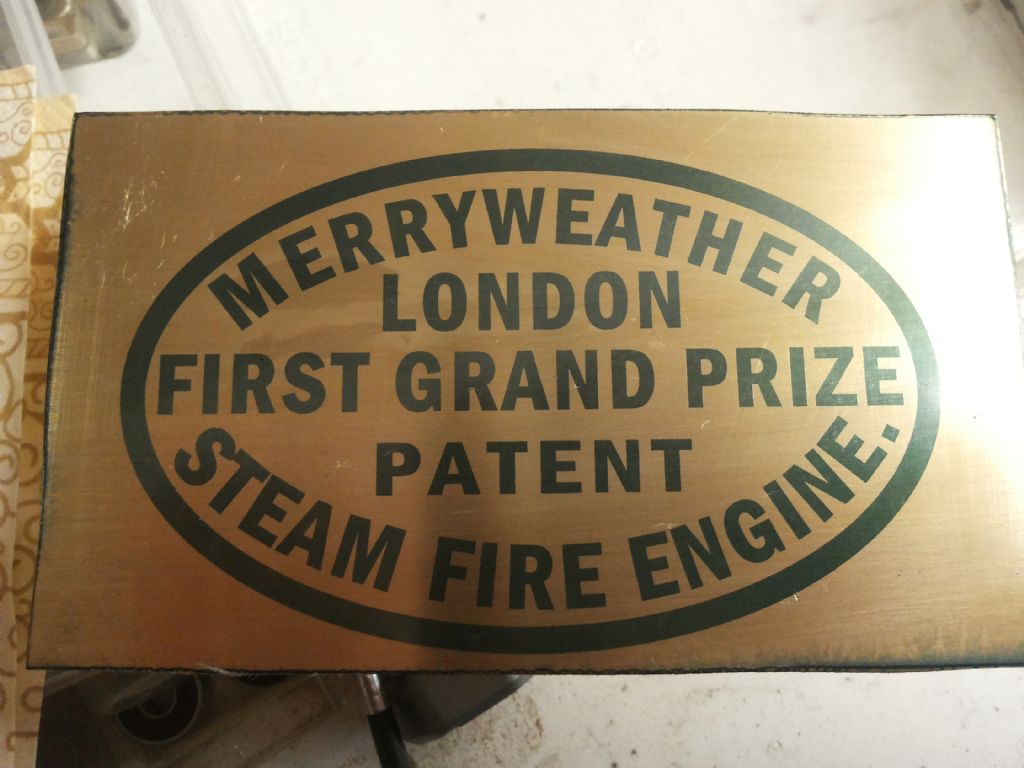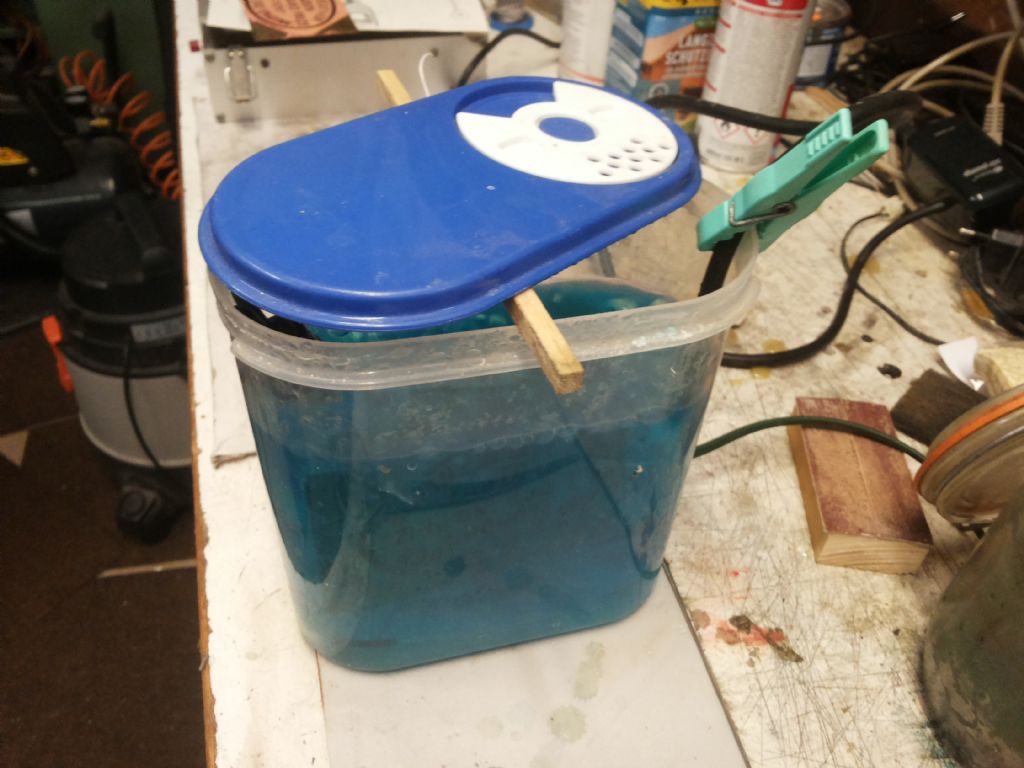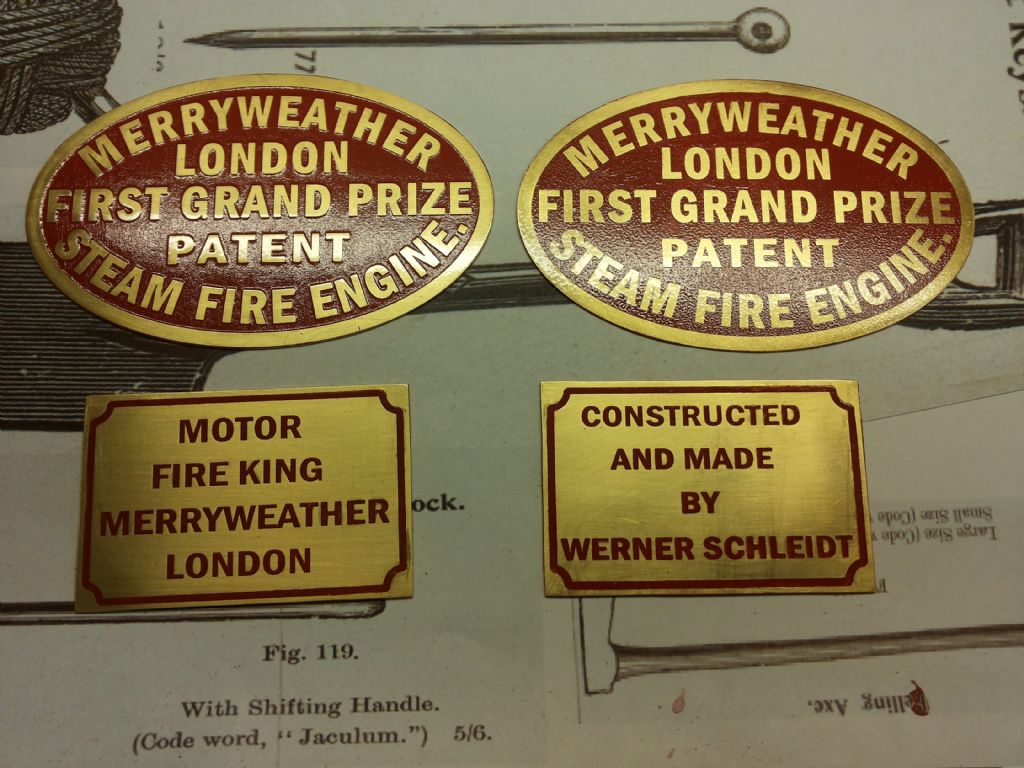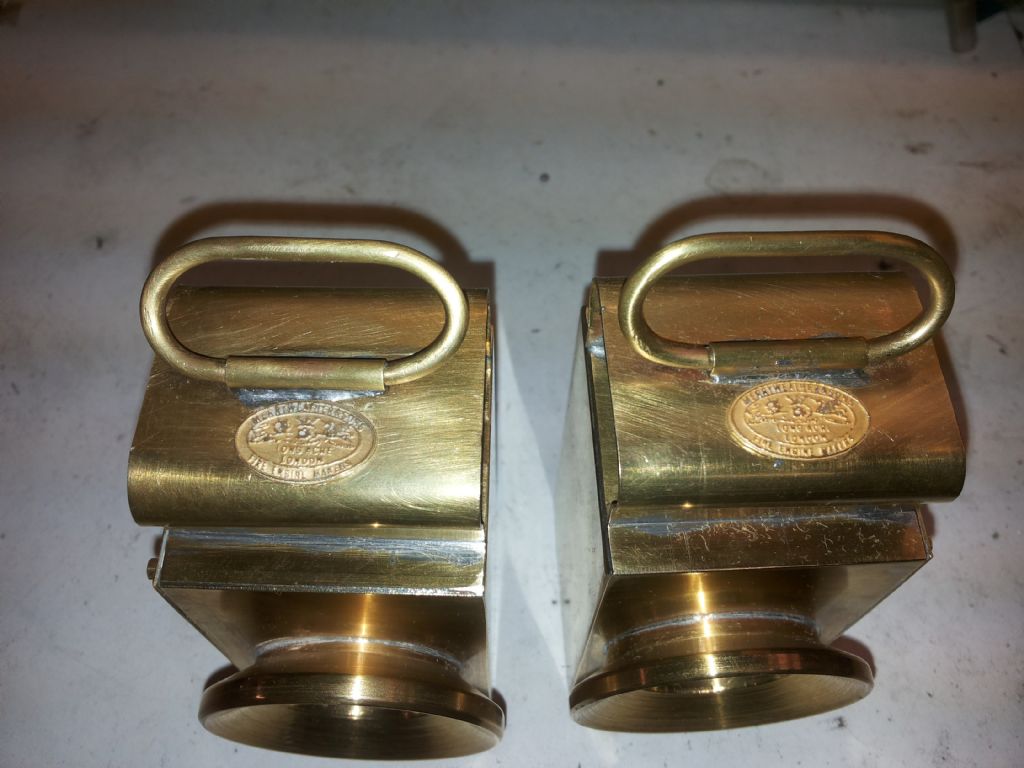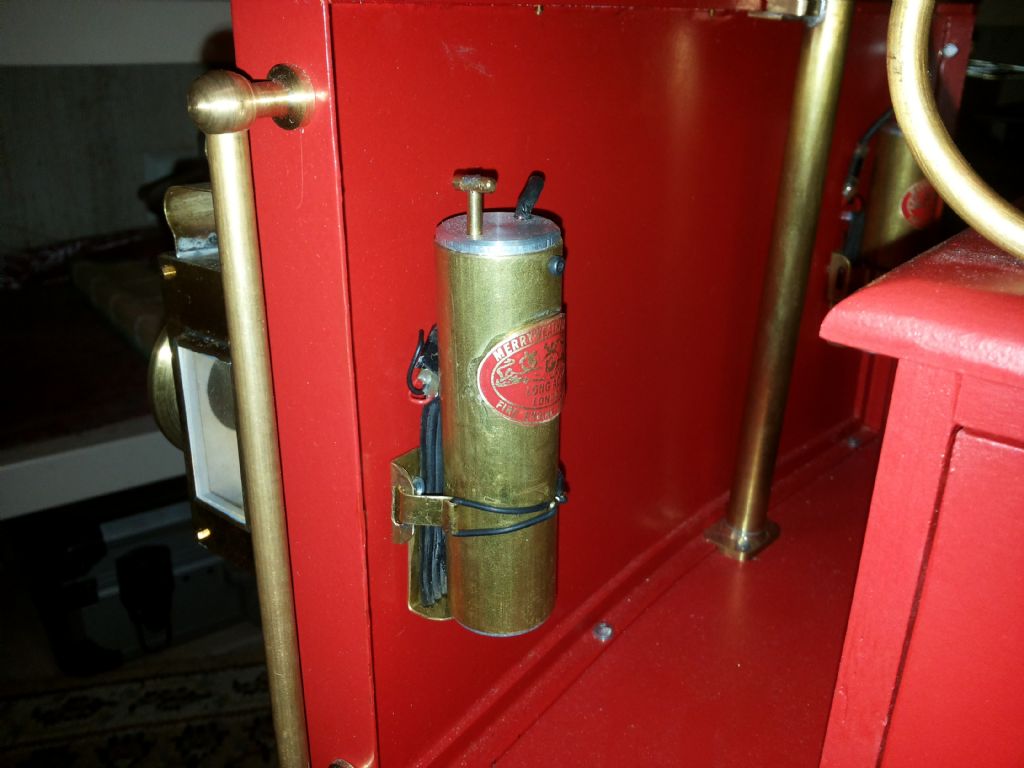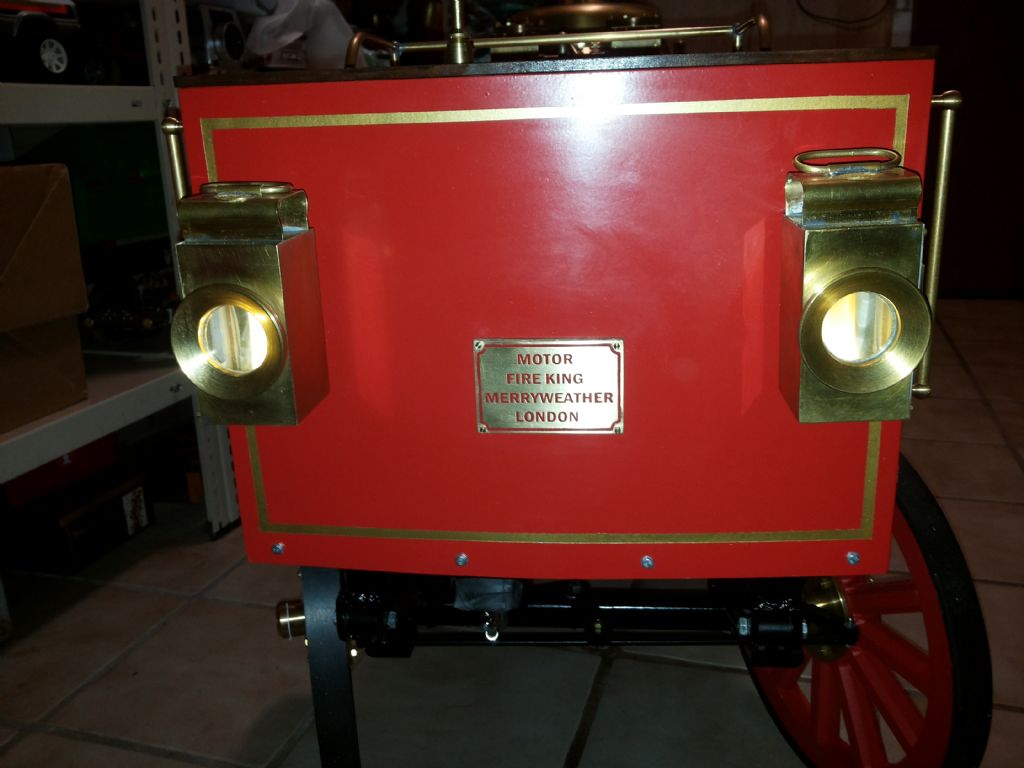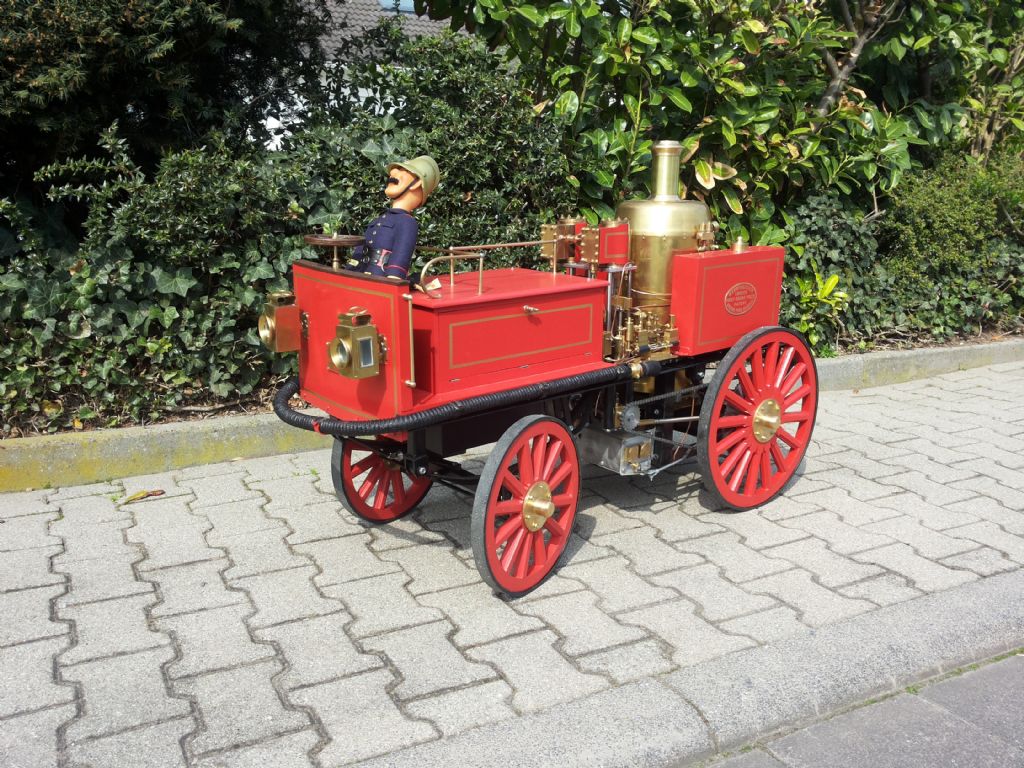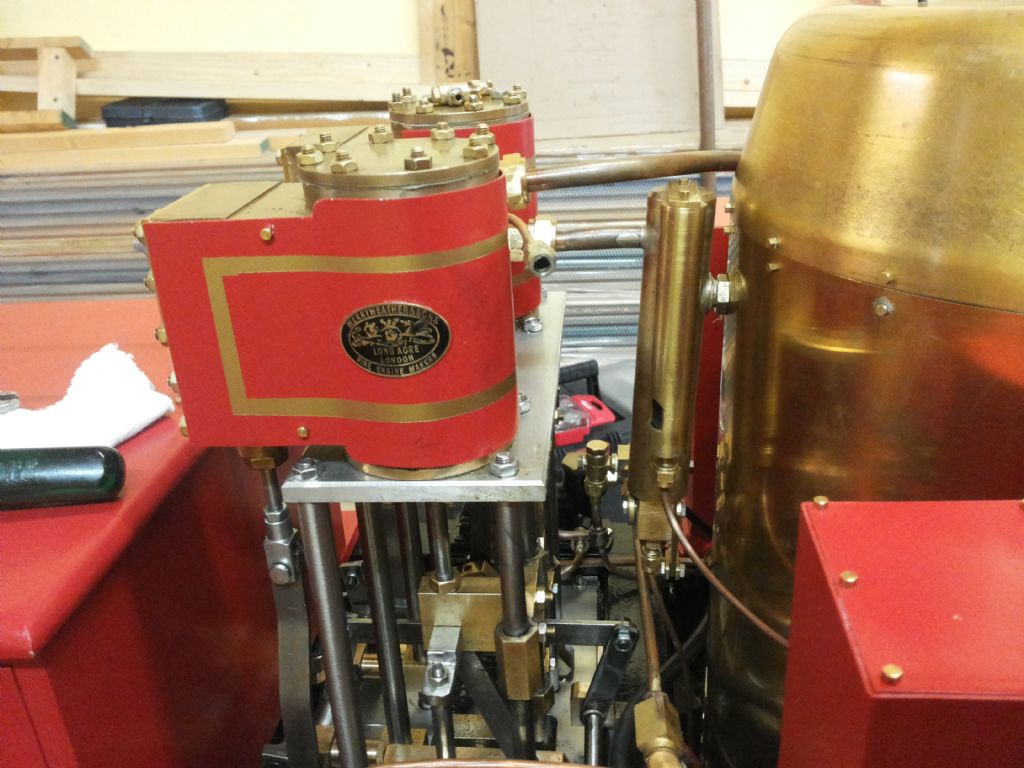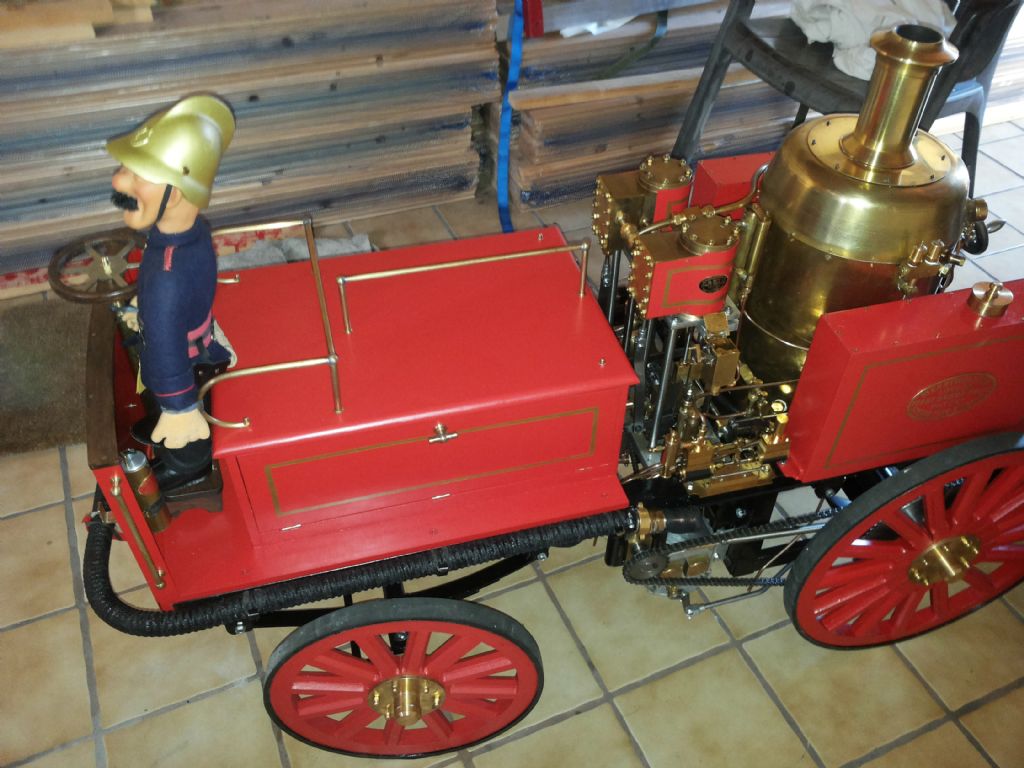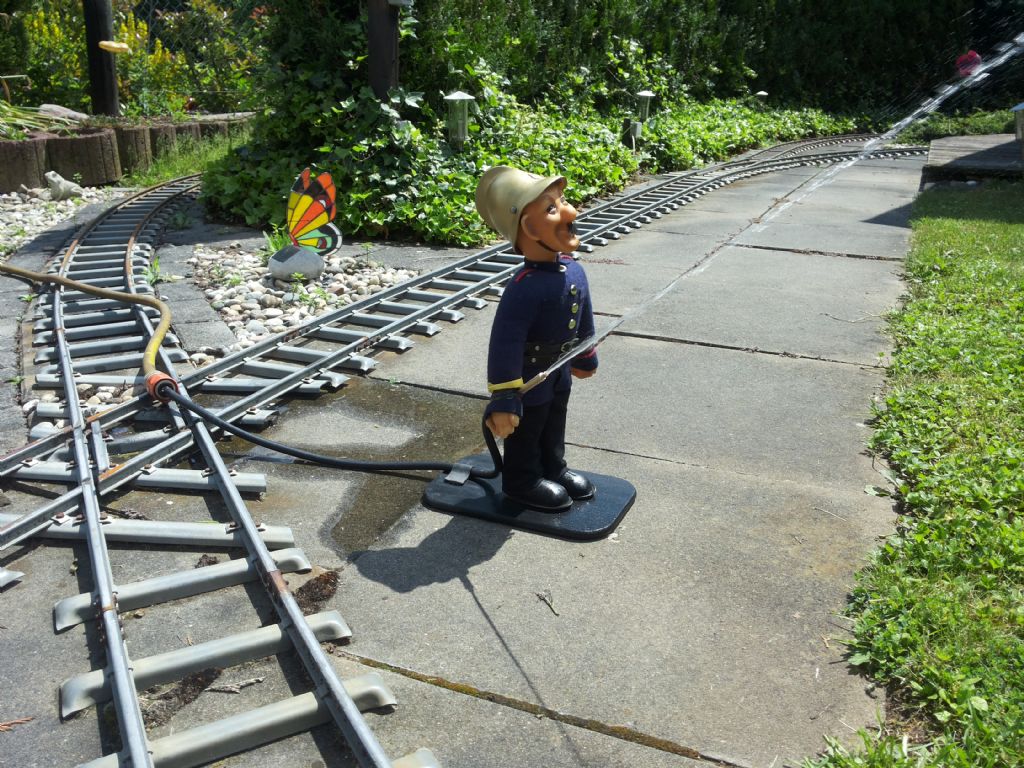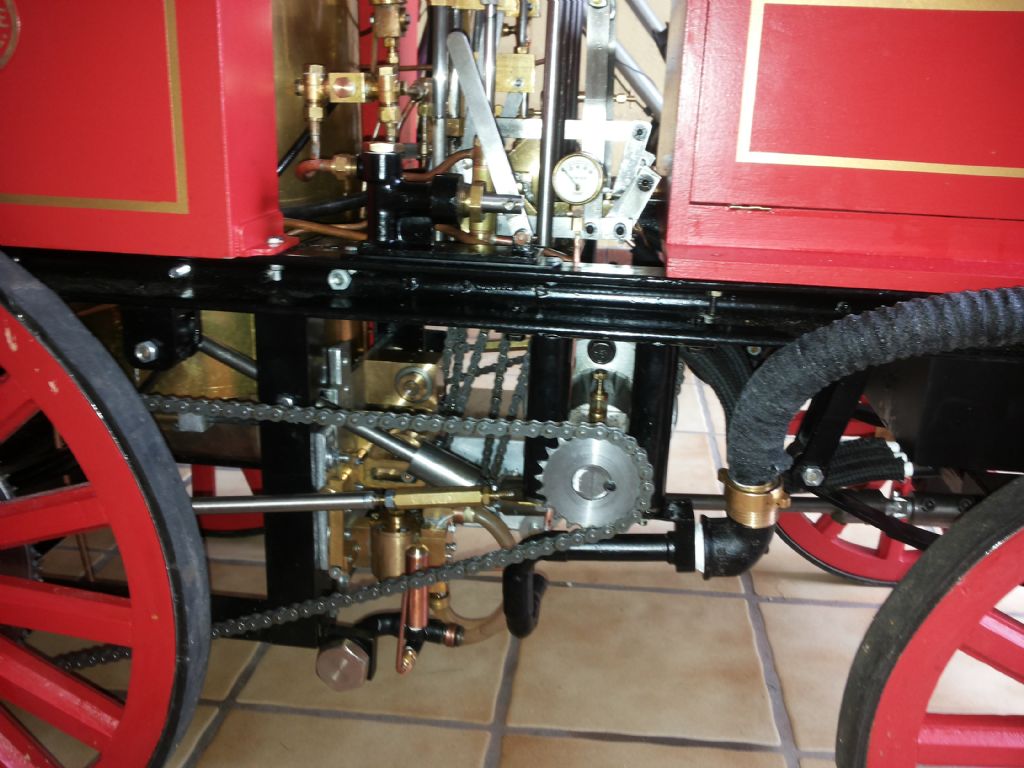Hello ,
after the boiler was ready covered I had a big step forward.
Some time in between i build some parts like the front lamps. It was hard to decide which form I have to build ,because the original I had in my pictures are adapted several times with different lamps.
The technical change from oil to gas lamps forced other look of the lamps.
At first I made quick and dirty a cardboard lamp and found it is to big, then I made a sketch for the right lamp.

It was decided that the lamps in the model are iluminated by LED.

From a colleage I got a defect LED lamp after stripping I found that the voltage and current control chip was defective. The LED s were very well. I made than several tries to find a solution that they look similar to a petrol powered one.
After I found a solution for "the burner" I decided to make a battery holder like a fireextinguisher for 3 AA cells.On the top the handle is the power switch. And I have to found a solution for easy connection of the power lines.
The picture shows the holder and power connector.

Here is the battery holder and the handle is the switch.

And here are the lamps installed.

The firefighter was a special addition for the company Ziegler a german fire truck builder and is made by Steiff dolls.
The next work intensiv step was doing the plate work.
I was looking for Merryweather plate which are in the same time on the originals.
With the free program inscape it was possible to make and overlay from the original and the new sketch.After a good fit it allowed to separate again sketch and picture.
The used technic is the same as etching printed circuit boards , but you need much more time and new acid to get 0,25 mm deepness for the letters.

The brass is covered with a photoresistant paint. It is not easy to clean the brass and make a clean job.
After one day of driying it was 5 minute developed with ultra violet light by special light tubes.

Here is the developed plate with photoresitant.

In this improvised etching box with heating and air bubbles it was made.

After some days of work I got this result. The left plate is very good the right Mw. plate is not deep enough etched. My acid was not good anymore. I have to have a new one.

The lamps get their small plates as big as thumb nail

and the fire extinguisher

Werner
 David George 1.
David George 1.

